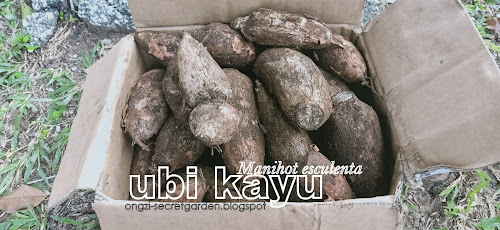Ongzi, a zeal HORTICULTURIST,yet resides in a plant-free apartment…… thinks that plants deserved to be treated as LIVING THING, not merely as plants …… strongly condemns any form of CRUELTY TO PLANTS, yet enjoys feast on them…… collects only e-HERBARIUM, and proudly encourages others to do the same……
Sunday, 13 September 2020
Saturday, 12 September 2020
Wednesday, 26 August 2020
Endemic Flora of Gunung Mulu National Park
Gunung Mulu National Park contains a
large number of plant species. The park has 17 vegetation zones, with 3,500
species of vascular plants, and 1,500 species of flowering plants, 1,700
species of liverworts and mosses, 4,000 of fungi. There are 109 species in 20 genera of palms,
over 1,700 mosses and liverworts, 8,000 species of fungi, and 442 species of
spore-producing pteridophytes, 182 species of orchid, 15 species of carnivorous
pitcher plants are recorded.
Mulu’s limestone karst and isolated mountain peaks are home to numerous rare and endemic plants and animals. Notable examples of plants include the one-leaf plant Monophyllaea pendula, which can be seen clinging to the rock face at the entrance to Clearwater Cave; Salacca rupicola, an endemic palm that grows on the cliff outside Deer Cave; wild sago palm Eugeissona utilis, occurring on the steep slopes of Gunung Mulu; Areca abdulrahmanii, which grows on the Setap shales; and the pitcher plant, Nepenthes muluensis, which can be seen near the top of Gunung Mulu. Iguanura melinauensis and Licuala lanata are endemic to the alluvial plain; Calamus neilsonii are endemic to the limestone. Endemic mosses include Stereodontopsis flagellifera, Coryphopteria andersonii, Hypnodendron beccarii and Hypnodendron vitiense. The very rare bog-moss Sphagnum perichaetiale can be found in rain gullies in the high forest.
Tuesday, 25 August 2020
Rubber Tapping & Latex Processing
Tapping
The latex is extracting from rubber tree ( Hevea brasiliensis ) by skillfully slicing a groove into the bark of the tree with a specialty knife. The trees must be approximately 6 years old and 150mm in diameter in order to be tapped.The tapping work is done at night or in the early morning when the temperature is lower, so that the latex will drip longer before coagulating.
Ammonia solution are sometimes added to the collection cup to prevent natural coagulation and allow the latex to remain in liquid state. Liquid latex is used to produce latex concentrate for manufacture of dipped goods or coagulated under clean and controlled conditions. Natural rubber latex concentrate, is preserved with ammonia solution, contains 60% Dry Rubber Content ( DRC ).
Coagulating & Milling
Latex is a suspension of isoprene, microscopic natural rubber particles in an aqueous medium. These particles scatter light, making the latex solution appear white and homogeneous like milk. The surfaces of the latex particles are charged, which creates forces of repulsion between them that keep them from coagulating. In the coagulation process formic acid neutralizes these charges, thereby eliminating the forces of repulsion between the particles.
The coagulated latex block are then pressed to remove water by passage through rollers. The last pairs of rollers are grooved and thus produce ribbed sheets. The ribs increase the surface area and facilitates drying.
The
serum left after latex coagulation is rich in quebrachitol
(QCT), and various water-soluble materials such as sugars, lipids,
proteins and minerals, which can cause water pollution if the serum is directly
discharged into the environment.
Washing & Drying
The freshly sheeted rubber are then soaked in running water for a short time after milling to wash off the residual non-rubbers and, to prevent discoloration and mold growth.
Sheets were hung up to drip off the remaining water for 4 to 6 hours preferably in the shade to drain off the surface moisture and thereby reduce the smoking period.
Smoking
Dripped sheets which contain about 20% moisture are dried in a smoke house. Smoking enables the sheets to absorb creosotic and other antiseptic substances which provide a preservative effect and anti-oxidant effect on to the rubber. Temperature of the smoke house maintained at range between 48-54 °C.
Generally,
smoking could be completed within 4-5 days.

















































